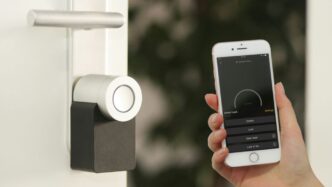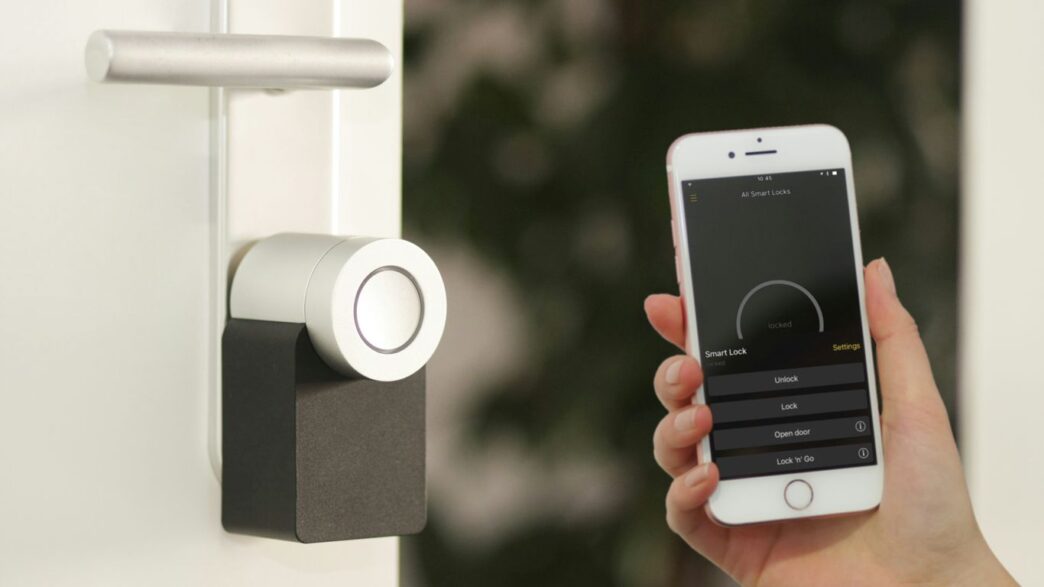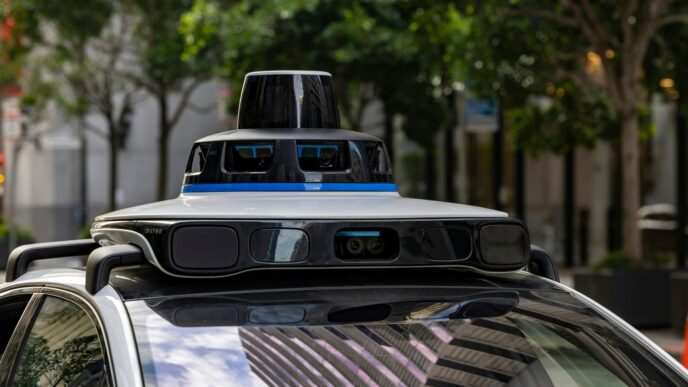Keeping your home safe is a big deal, right? With technology always changing, figuring out the best way to protect your place can feel like a lot. If you’re thinking about beefing up your home security in 2025, especially without those monthly fees, you’re in luck. We’ve checked out a bunch of options to help you find a great self-monitored security system that fits your life. These systems give you control over your home’s safety, and you can often add professional monitoring later if you want.
Key Takeaways
- A self-monitored security system lets you keep an eye on your home yourself, usually through an app on your phone. This means no monthly fees for monitoring services.
- Many systems offer the flexibility to switch to professional monitoring if you decide you want that extra layer of security later on.
- DIY installation is common with these systems, saving you money on setup costs.
- When choosing, look for systems that let you use all the main security features, like getting alerts, without needing a paid subscription.
- While the system itself might be fee-free to monitor, remember that cloud storage for camera recordings might still have a monthly cost, though some systems offer local storage options.
1. SimpliSafe
SimpliSafe has been a go-to for a lot of folks looking for a security system that’s easy to set up and doesn’t break the bank. It’s pretty straightforward – you get the main hub, some sensors for doors and windows, and maybe a motion detector. The whole idea is you can set it up yourself without needing a professional, which is a big plus for many people.
When you’re looking at the equipment, it feels pretty solid. I’ve heard good things about their outdoor camera, especially the color night vision – apparently, it makes a big difference when you’re trying to see who’s at the door late at night. They also have these smart sensors that are supposed to cut down on those annoying false alarms. That’s always a win, right?
One thing to keep in mind, though, is the siren on the base station. Some people find it’s not as loud as they’d like, especially if you have a bigger house. So, if you’ve got a sprawling place, you might want to think about getting an extra alarm or two to make sure you can hear it everywhere.
What’s cool is that you don’t have to sign a long contract. You can choose to monitor it yourself, which is free, or you can opt for their professional monitoring service, which starts around $20 a month. They even have a higher tier that offers more advanced features for about $30 a month. This flexibility is a big draw, letting you switch things up if your needs change.
Here’s a quick look at what you might expect:
- Starting Price: Around $250 for a basic kit.
- Self-Monitoring: Free, with app notifications.
- Professional Monitoring: Starts at $20/month.
- Setup: Designed for DIY installation.
- Contracts: No long-term contracts required.
They also have different packages already put together, which can make choosing easier, but sometimes it feels like there are a lot of options to sift through. If you’re not sure where to start, you can always call them up, and they’ll help you build a custom system. Just be ready to tell them exactly what you need so you don’t end up with stuff you don’t want.
2. Abode
Abode really stands out because it gives you a lot of choices, especially if you’re trying to avoid monthly fees. You can totally self-monitor without paying a dime, which is pretty cool. They offer a few different hub options, like the basic Smart Hub or the more advanced Iota. The Iota is neat because it’s an all-in-one unit with a built-in camera and motion sensor, so it can cover a good chunk of your place right out of the box. I tested it in my two-bedroom apartment, and it did a solid job covering entry points and main living areas.
Now, while you can use Abode without a subscription, you get a lot more features if you opt for their Standard plan. This plan, which is pretty affordable at $7 a month, unlocks things like video recording, setting up automated routines with their CUE system, and getting push notifications. Without it, you can still control devices manually, but the remote control aspect isn’t as useful if you can’t see what’s happening or get alerts.
Here’s a quick look at what the Standard plan adds:
- 10 days of cloud storage for all your cameras.
- Full push notification features.
- A 10-day history of events.
- Panic alarms for quick alerts.
- Smart detection features for cameras.
- Priority customer support.
If you’re into smart home stuff, Abode plays nice with a lot of other devices. Connecting to things like Apple HomeKit, Z-Wave, or Zigbee products usually requires their Smart Security Hub or Iota Hub, though. It’s a system that grows with you, letting you add more sensors and cameras as needed. For a DIY setup that doesn’t force you into a contract, Abode is definitely worth a look.
3. Ring Alarm
Ring Alarm is a pretty solid choice if you’re looking for a self-monitored security system, especially if you’re already in the Amazon ecosystem or a big fan of their cameras. They’ve got a ton of different starter kits, so you can usually find something that fits your needs, though the really cheap ones might not have enough sensors for a bigger house. The real standout feature here is the camera integration. Ring is famous for its doorbells and cameras, and they integrate really well with the alarm system. You get reliable cameras that, from what I’ve heard, can last for years.
One cool thing is the Retrofit Alarm Kit. If you have an older home with existing wired alarm sensors, this kit can hook into them, saving you some cash if the old stuff is still working. It still needs the main Ring Alarm base station, though.
Here’s a quick look at what you can expect:
- Equipment Costs: Packages generally start around $250.
- Monitoring: You can go the DIY route or get professional monitoring.
- Monthly Costs: Professional monitoring is an extra $10 per month on top of a Ring Home plan, which also starts around $10/month.
- Smart Home Stuff: Works with Alexa and Google Home.
The Ring Alarm Pro model is also pretty neat because it has a built-in Eero Wi-Fi 6 router. This can help boost your home’s Wi-Fi signal, which is a nice bonus if you’ve had trouble with dead spots before. It’s a bit pricier than some other options, but the camera quality and the Wi-Fi boost make it a strong contender for many people.
4. Arlo

Arlo’s security system is a bit different from what you might expect. Instead of a bunch of separate gadgets, they’ve got this really neat All-in-One Sensor. This little guy can do a lot – it picks up on motion, light changes, temperature shifts, and even water leaks. Plus, it can tell if your smoke or carbon monoxide alarm goes off. It’s pretty impressive how much one small device can handle.
What’s cool is that you can use most of the sensor’s features without paying a monthly fee. That’s a big plus for keeping costs down. If you already have Arlo cameras, this system plays nicely with them, and you can even add things like Arlo’s doorbell or a handy disarming fob. The cameras themselves are top-notch, especially if you’re looking for really clear video quality, often better than what other brands offer.
However, there are a couple of things to keep in mind. While the basic system works well on its own, you’ll need a paid plan if you want things like video recording storage or more advanced notifications. Also, if you want battery backup for the hub, that’s an extra cost. The smart home compatibility isn’t as broad as some other systems out there, so if you have a lot of different smart gadgets, you’ll want to check if they work together.
Here’s a quick look at what you might expect:
- Starter Kit Price: Around $199
- Optional Monitoring: Starts at $24.99/month
- Key Feature: All-in-One Sensor for multiple detection types
- App Control: Generally good, though some settings can be tricky to find.
- Contract: No contract required for basic service.
5. Eufy
Eufy really stands out if you’re trying to avoid monthly fees. They’ve got a good setup where your camera footage is stored locally, meaning you don’t have to pay for cloud storage. This is a big plus for privacy and your wallet. The latest base station is pretty smart too, with built-in detection for people, vehicles, and even animals. It even has facial recognition, which is neat – no more alerts when your cat decides to patrol the backyard.
One thing that’s great about Eufy is how well the sensors seem to connect, even in larger homes. You shouldn’t have trouble getting a signal from the furthest corners of your house. While the core system is subscription-free, they do offer an optional professional monitoring plan if you want that extra peace of mind, for about $10 a month.
Here’s a quick look at what Eufy offers:
- Impressive security cameras: They’re known for good quality cameras.
- Local video storage: Keep your footage without a monthly bill.
- Smart detection: Recognizes people, vehicles, and animals.
- Optional professional monitoring: Available for around $10/month.
However, it’s not perfect. Eufy doesn’t have battery or cellular backup, so if the power goes out, your system might go down too. Also, the selection of sensors isn’t as wide as some other brands, so you might not find every specific type of sensor you’re looking for. They do work with Apple HomeKit, Google Home, and Amazon Alexa, which is nice, but their smart home integration beyond that is a bit limited.
6. Reolink
Reolink is a solid choice if you’re looking for a security system that leans heavily on cameras and doesn’t push you into monthly subscriptions. Setting it up is pretty straightforward, usually taking less than half an hour. This system really shines if you want local video storage, meaning your footage stays with you and not on some distant server. They’ve got a pretty wide variety of cameras, too, from battery-powered ones to LTE models, so you can probably find something that fits your specific needs.
What’s cool about Reolink is that you don’t have to pay for a monitoring plan. All the features work right out of the box, which is a big plus for self-monitored setups. They do offer cloud storage as an option, which is nice to have, but it’s not shoved down your throat.
Here’s a quick look at what Reolink brings to the table:
- No pressure for monitoring plans: You get full functionality without needing a monthly subscription.
- Impressive camera quality: Features like 4K resolution and wide-angle views are common.
- Local storage options: Keep your video recordings on an SD card or a local hub.
- Smart detection: The cameras can tell the difference between people, packages, cars, and even animals.
While Reolink might not have all the bells and whistles of traditional security systems, like smoke detectors or door sensors, its focus on high-quality, camera-centric security with local control makes it a strong contender for many homeowners.
7. Google Nest
If you’re already deep into the Google ecosystem, the Google Nest Secure system (though officially discontinued, it’s still around and functional) or its successor, the Google Nest system, might feel like a natural fit. The biggest draw here is how well it plays with other Google devices. Think your Nest cameras, your Google Home speakers – they all just sort of work together without much fuss. It’s pretty neat.
Setting it up is generally straightforward. You get a base station, some contact sensors for doors and windows, and a motion detector. You can add more sensors if you need them, which is handy. The app is where you control everything, arming and disarming the system, checking sensor status, and getting alerts. It’s pretty intuitive, especially if you’re used to other Google apps.
One of the cool things is the voice control. You can tell your Google Assistant to arm the system, which is surprisingly useful when your hands are full. It also has cellular backup, so if your Wi-Fi goes down, it can still send alerts. That’s a big plus for peace of mind.
However, it’s not all sunshine and roses. The initial cost can be a bit higher compared to some other DIY systems, especially if you want to outfit a larger home with all the bells and whistles. Also, while it integrates well with Google products, its compatibility with third-party smart home gadgets isn’t as broad as some competitors. If you’re looking for a system that plays nice with a wide variety of smart locks or lights from different brands, you might run into some limitations. Still, for a cohesive smart home setup centered around Google, it’s a solid contender. You can find more about how it compares to other systems by looking at ADT Home Security options.
Wrapping Up Your Smart Home Security
So, we’ve looked at some solid options for keeping your place safe without breaking the bank on monthly fees. Whether you’re all about the latest smart home gadgets or just want something simple and reliable, there’s a self-monitored system out there for you. Remember, the goal is peace of mind, and these systems give you that control. You can always add professional monitoring later if you decide you want that extra layer of backup, but for many, these DIY setups are more than enough to deter trouble and keep you in the loop. Picking the right one just means thinking about what features matter most to you and your home.
Frequently Asked Questions
What’s the difference between self-monitored and professionally monitored security systems?
With a self-monitored system, you’re the one who gets alerts and decides what to do, like calling the police. A professionally monitored system has a company that watches for alerts 24/7 and contacts emergency services for you. Self-monitoring is usually cheaper, but professional monitoring offers extra peace of mind.
Can I switch from self-monitoring to professional monitoring later?
Yes, most systems let you add professional monitoring whenever you want, often on a month-to-month basis. This gives you flexibility if you decide you need more help, especially when you’re away on vacation.
Do I need to pay monthly fees for a self-monitored system?
Generally, no. The main point of self-monitoring is to avoid monthly fees. You should be able to arm/disarm your system, get alerts, and use basic features through an app without paying extra each month. However, you might still pay a fee if you want cloud storage for camera recordings.
Are self-monitored systems as effective as professionally monitored ones?
Self-monitored systems still provide a good level of security. Just having visible cameras and alarms can scare off many potential burglars. While professional monitoring offers an extra layer of backup, a well-set-up self-monitored system can still be a strong deterrent.
What are the advantages of DIY installation?
DIY installation means you set up the system yourself, which saves you money on installation fees. It also gives you more control over where you place your sensors and cameras, making sure your home is protected just the way you want it.
What should I look for when choosing a self-monitored system?
Look for systems that are easy to install yourself, don’t require a monthly fee for basic functions like arming/disarming and getting alerts, and have features you need, like good cameras or smart home compatibility. Also, consider if you want local storage for videos or if cloud storage is okay.














